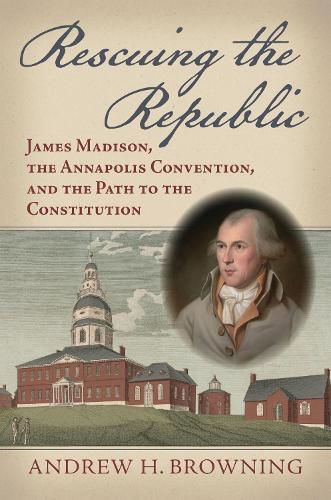Readings Newsletter
Become a Readings Member to make your shopping experience even easier.
Sign in or sign up for free!
You’re not far away from qualifying for FREE standard shipping within Australia
You’ve qualified for FREE standard shipping within Australia
The cart is loading…






The first examination of how James Madison and the Annapolis Convention defied all odds and expectations to begin the near-impossible process of restructuring the federal government and worked to bring the republic back from the brink of collapse.
Although many books address the who, what, and why of the Constitution's framing, not one explains the how of calling the Constitutional Convention-how a convention that seemed patently forbidden by the Articles of Confederation, and appeared so impossible to Alexander Hamilton that he quit Congress in despair of ever seeing one called, could have gathered enough support over a few months to be attended by every state but one.
Resolving that conundrum is the aim of Rescuing the Republic. Andrew Browning sets the stage with an explanation of the fatal flaws in the Articles of Confederation that were becoming apparent in the early years of American independence. He then explains how Madison-with the support of Washington and late assistance from Hamilton-built on the surprising success of the Mount Vernon Conference to arrange the widely misunderstood Annapolis Convention. Just as the decade-old Union was threatening to dissolve, that convention's "stealth" success enabled Madison to overcome the previously insurmountable obstacles to restructuring the federal government. Far from being the "fiasco" it has been called, the Annapolis Convention is shown to have been the essential springboard to the Constitutional Convention. Circumventing populist demagogues and extreme advocates of states' rights, it made possible what Madison called the "rescue of the Union, and the blessings of liberty staked on it, from an impending catastrophe."
At a time when Americans are once again strongly divided over their vision of the country, Browning's lucid study is a reminder of the deep roots of resistance to a truly national government-and of the risks inherent in returning to a confederation of quasi-sovereign states.
$9.00 standard shipping within Australia
FREE standard shipping within Australia for orders over $100.00
Express & International shipping calculated at checkout
Stock availability can be subject to change without notice. We recommend calling the shop or contacting our online team to check availability of low stock items. Please see our Shopping Online page for more details.
The first examination of how James Madison and the Annapolis Convention defied all odds and expectations to begin the near-impossible process of restructuring the federal government and worked to bring the republic back from the brink of collapse.
Although many books address the who, what, and why of the Constitution's framing, not one explains the how of calling the Constitutional Convention-how a convention that seemed patently forbidden by the Articles of Confederation, and appeared so impossible to Alexander Hamilton that he quit Congress in despair of ever seeing one called, could have gathered enough support over a few months to be attended by every state but one.
Resolving that conundrum is the aim of Rescuing the Republic. Andrew Browning sets the stage with an explanation of the fatal flaws in the Articles of Confederation that were becoming apparent in the early years of American independence. He then explains how Madison-with the support of Washington and late assistance from Hamilton-built on the surprising success of the Mount Vernon Conference to arrange the widely misunderstood Annapolis Convention. Just as the decade-old Union was threatening to dissolve, that convention's "stealth" success enabled Madison to overcome the previously insurmountable obstacles to restructuring the federal government. Far from being the "fiasco" it has been called, the Annapolis Convention is shown to have been the essential springboard to the Constitutional Convention. Circumventing populist demagogues and extreme advocates of states' rights, it made possible what Madison called the "rescue of the Union, and the blessings of liberty staked on it, from an impending catastrophe."
At a time when Americans are once again strongly divided over their vision of the country, Browning's lucid study is a reminder of the deep roots of resistance to a truly national government-and of the risks inherent in returning to a confederation of quasi-sovereign states.